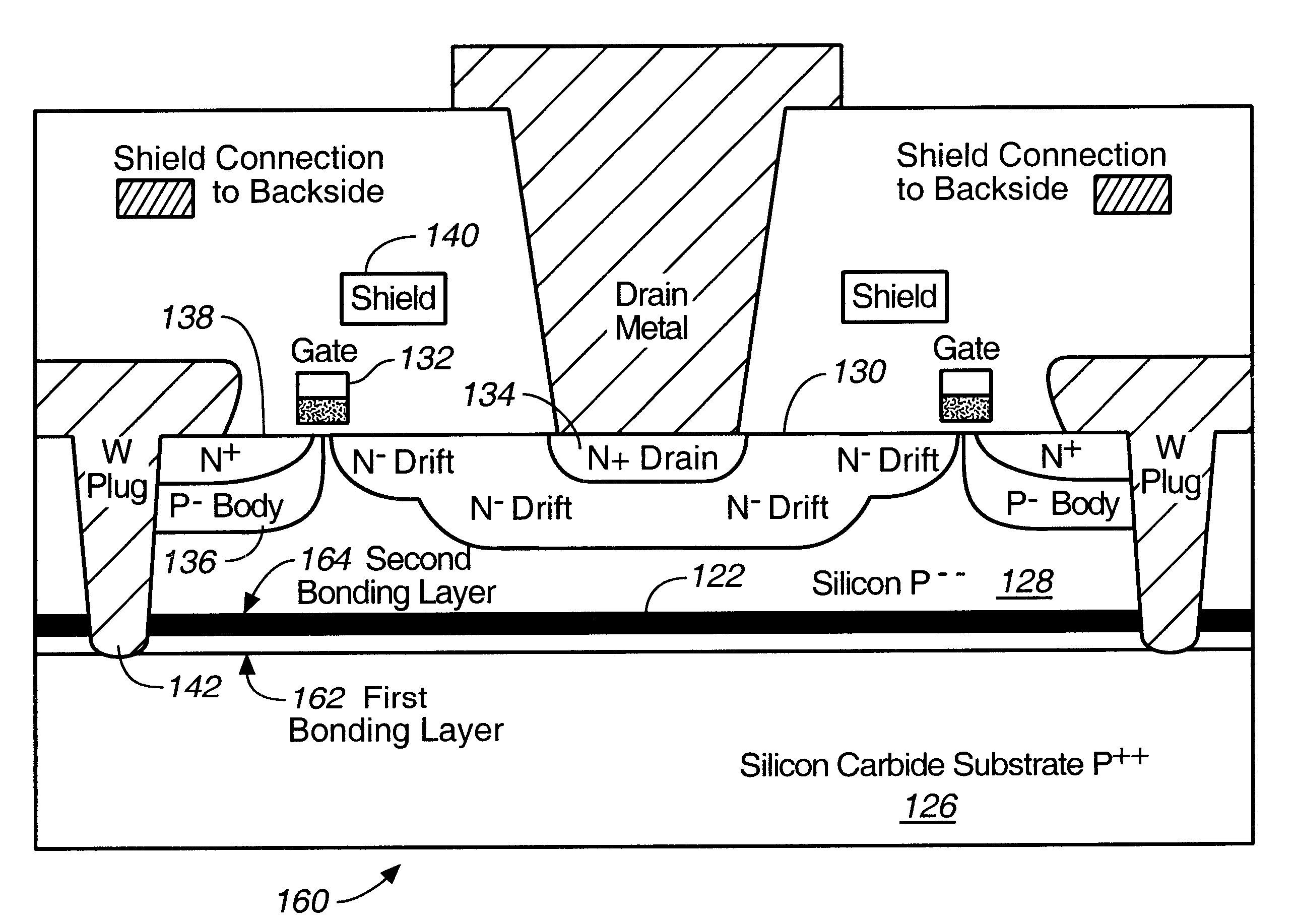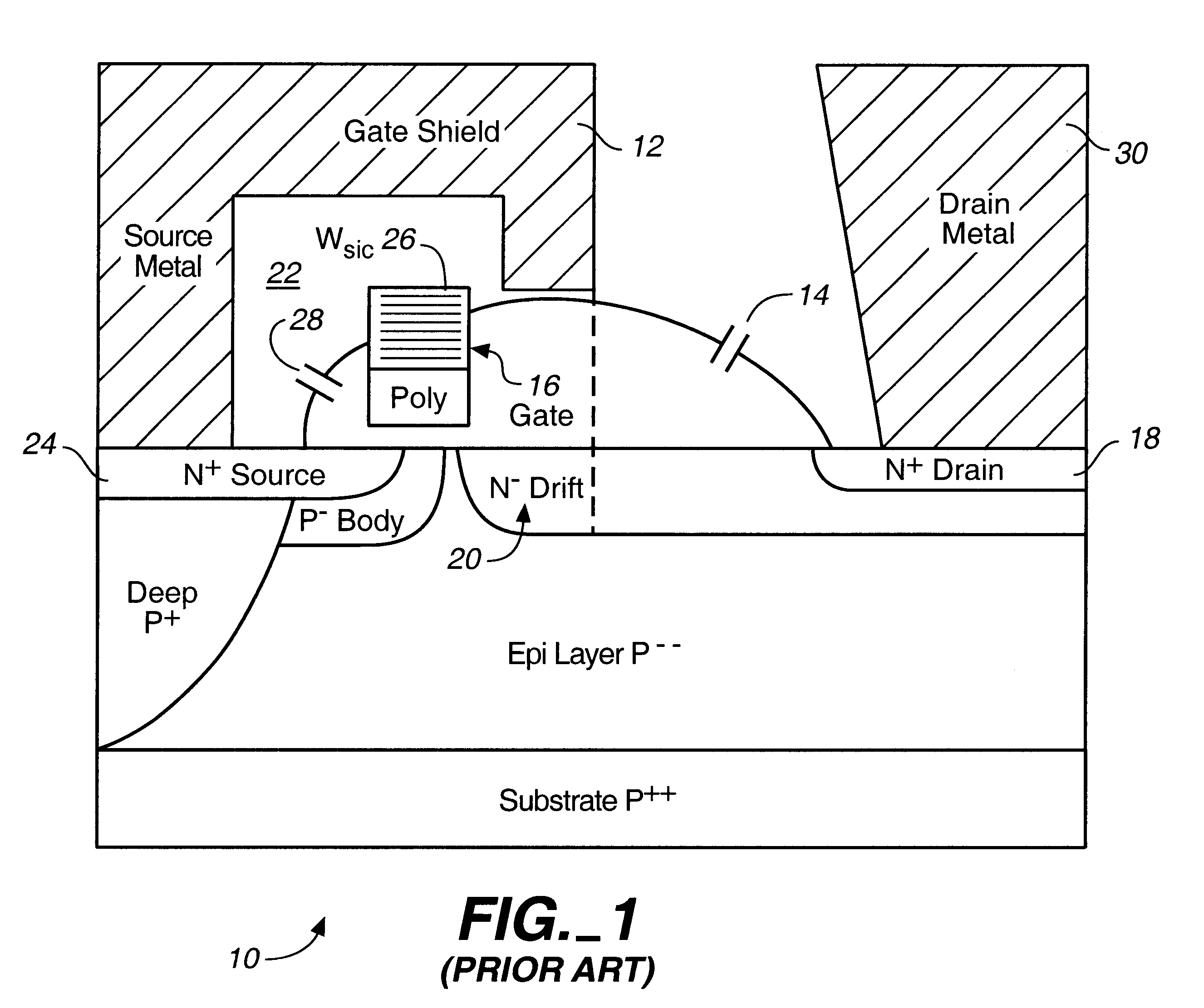Microwave field effect transistor structure on silicon carbide substrate
a microwave field and transistor technology, applied in the direction of semiconductor devices, semiconductor/solid-state device details, electrical devices, etc., can solve the problems of limiting the thermal dissipation of silicon-built devices, affecting the growth and device fabrication technology, and limiting the experience of silicon-built devices. the effect of thermal dissipation
- Summary
- Abstract
- Description
- Claims
- Application Information
AI Technical Summary
Problems solved by technology
Method used
Image
Examples
example i
Thermal Calculation
The thermal resistance calculations were made with formulations from Howes M. J., and Morgan D. V. "Reliability and Degradation", John Willey & Sons, Bath, England, 1981, page 422 The following structure (as shown in FIG. 9) was used for the computations.
From Howes and Morgan. For a square structure where T / W<2 the thermal resistances can be approximated as:
Rth=t(k.multidot.W) (0.25.multidot.t2+t+1); (Eq. 1)
where: t=T / W.
The Eq. 1 applied to the given above structure yielded the following results for the thermal resistances Rth (as shown in Table I):
The main cause of failure of RF power devices, when operated at high temperatures and current densities, is an electromigration failure in the topside metal layer. Since the failure rate of high power microwave devices is directly related to operating temperature, by utilizing Si-on-SiC (Si2C) technology the thermal resistance of the die structure can be considerably reduced, and therefore the operating life of devices ...
example ii
Electromigration Calculation
The MTF for an interdigitated LDMOS device due to metal electromigration in the drain fingers is calculated using The classical formula developed by Black from experimental results in the late '60s.
MTF=w t e (.theta. / KT) / C J2; (Eq. 2)
Wherein: w=line width; t=line thickness; .theta.=Activation energy;
K=Boltzman constant; T=temperature in oK; C=Material constant;
The main uncertainty in determining the MTF for a device is in using appropriate values for the activation energy .theta. of the metal layer used. Xemod's foundries use a metal sandwich of Al / 2%Cu / 1%Si, 1.5 microns thick, with and activation energy of between 0.93 eV and 0.65 eV depending on the width of the line in question. Replacing the dimensional values of the drain finger (the portion of the die topside metal with the highest current density) for a typical
XeMOS II structure into equation 1 we obtain:
MTF:=226 years for Silicon
MTF:=3086 years for Si2C
This lifetime was calculated...
PUM
 Login to View More
Login to View More Abstract
Description
Claims
Application Information
 Login to View More
Login to View More - R&D
- Intellectual Property
- Life Sciences
- Materials
- Tech Scout
- Unparalleled Data Quality
- Higher Quality Content
- 60% Fewer Hallucinations
Browse by: Latest US Patents, China's latest patents, Technical Efficacy Thesaurus, Application Domain, Technology Topic, Popular Technical Reports.
© 2025 PatSnap. All rights reserved.Legal|Privacy policy|Modern Slavery Act Transparency Statement|Sitemap|About US| Contact US: help@patsnap.com



